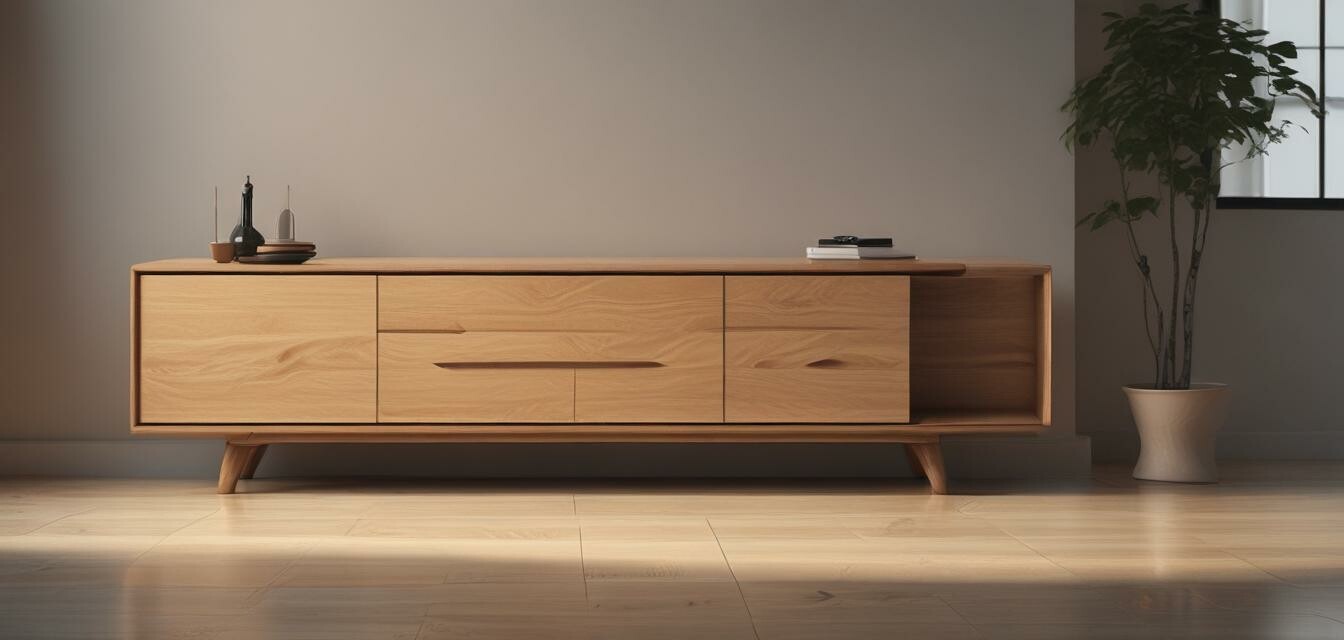
The Intersection of Technology and Wooden Furniture
Key Takeaways
- Technology is changing the design and production of wooden furniture.
- Smart furniture integrates features like wireless charging and mood lighting.
- Sustainable practices in technology enhance the longevity and appeal of wooden pieces.
- The blend of modern technology and traditional craftsmanship creates unique home decor solutions.
As we delve deeper into the 21st century, the intersection of technology and craftsmanship brings a fresh perspective to wooden furniture design. In a world where innovation aligns with sustainability, the demand for elegant yet functional wooden pieces is growing. This article explores how technology is influencing wooden furniture design and functionality in today's market while retaining the timeless appeal of natural wood.
The evolution of wooden furniture
Wooden furniture has been a staple in homes for centuries, cherished for its aesthetic and durability. However, with the introduction of technology, the design and functionality of wooden furniture are undergoing a significant transformation. Let’s take a look at some of the critical areas affected by these changes:
| Aspect | Before Technology | After Technology |
|---|---|---|
| Design Approach | Traditional craftsmanship with manual tools. | Advanced design software and 3D modeling. |
| Functionality | Basic utility without enhanced features. | Integration of smart features like storage solutions. |
| Sustainability | Limited knowledge about sustainable sourcing. | Use of eco-friendly materials and techniques. |
Smart furniture innovations
One of the most exciting trends at the intersection of technology and wooden furniture is the emergence of smart furniture. Here are some innovations to look out for:
- Wireless Charging: Many modern wooden desks are incorporating wireless charging technology, making it convenient to keep devices powered up.
- Custom Mood Lighting: Some furniture pieces come with built-in LED lighting that can be adjusted for ambiance.
- Adjustable Settings: Ergonomic furniture like chairs and desks now features technology that allows adjustments tailored to individual user preferences.
These smart features not only enhance convenience but also add a layer of sophistication to traditional wooden furniture.
Sustainability in woodworking technology
As consumers become increasingly eco-conscious, the intersection of technology and sustainability in wooden furniture cannot be overlooked. Here are some trends:
- Efficient Production Processes: Technology allows manufacturers to minimize waste during production, making processes more eco-friendly.
- Sustainable Materials: Innovations in technology aid craftsmen in sourcing reclaimed wood and alternative sustainable materials.
- Longevity: Advanced finishing techniques enhance the durability of wooden products, prolonging their lifespan and reducing waste.
This focus on sustainability not only appeals to today's eco-minded consumers but also emphasizes the importance of preserving our natural resources.
The aesthetic appeal of modern wooden furniture
The combination of technology with wooden craftsmanship results in incredible pieces that stand out aesthetically. Some recent styles include:
| Style | Description | Key Features |
|---|---|---|
| Minimalist | Simplicity and functionality define this style. | Clean lines, neutral colors, smart storage solutions. |
| Rustic | Focuses on natural beauty and organic shapes. | Reclaimed wood, distressed finishes, integrated technology. |
| Modern Hybrid | A blend of classic and contemporary design. | Tech integration, elegant finishes, accentuated grains. |
The fusion of these styles with technology leads to pieces that not only serve a purpose but also act as focal points in the home.
Pros
- Enhanced convenience with smart features.
- Increased durability through innovative finishing.
- Appeal to environmentally conscious consumers.
Cons
- Potentially higher costs due to technology integration.
- Maintenance might require technical knowledge.
Future trends in wooden furniture
Looking ahead, the future of wooden furniture in conjunction with technology appears promising. Some potential developments may include:
- Bespoke Designs: Advanced 3D printing techniques could allow for personalized furniture solutions.
- Augmented Reality: Technology may offer users the ability to visualize furniture in their space before purchasing.
- Smart Home Integration: Expect increased compatibility with home automation systems, allowing for seamless control of furniture features.
Conclusion
The intersection of technology and wooden furniture represents an exciting evolution in design and functionality. From eco-friendly practices to smart features, today's wooden pieces are adapting to modern needs while preserving their natural beauty. To explore more about sustainable wooden options, visit our Home Décor Accents and Kitchenware sections. It’s an exhilarating time for both consumers and craftsmen as we navigate this new terrain of creative possibilities.
Stay updated with the latest news and trends in the world of natural wood products and discover how technology continues to shape this timeless industry.